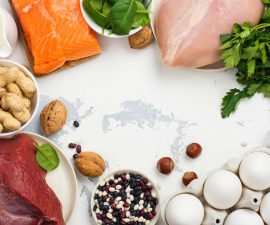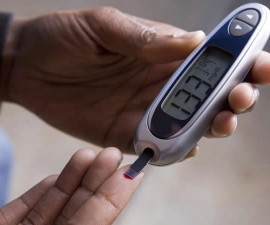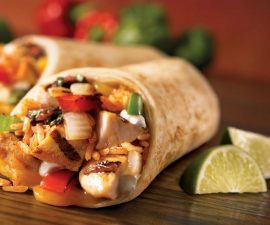… Continued …
Dangerous high-GI processed foods
GI (glycemic index) is used to describe different foods in affecting the blood sugar (glucose). Foods with high GI mean they can spike your blood glucose rapidly! On the other hand, low GI foods are considered safe for diabetics since these foods have the least effect on blood glucose.
Not all high-GI foods are forbidden if you have type-2 diabetes, though you may need to restrict them. Again, the key is eating in moderation.
However, there are also some high-GI foods you may need to avoid. For instance, processed foods such as sugary deserts, packaged cereal, and baked goods are very bad for diabetics.
Recommended foods for diabetics
What you eat should meet to your body needs. It should consist of a number of essential nutrients. In general, prioritize eating the following foods:
- Foods rich in fiber such as veggies, fruits, whole-wheat flour, nuts, and legumes. Fiber can help you feel full longer, and that’s why it is good for your weight control. And healthy weight is important if you have diabetes.
- Having diabetes doesn’t mean you need to skip carbohydrates. But to keep safe, eat more complex (starches) carbohydrates such as whole grains, brown rice, and legumes. Restrict simple carbohydrates (such as refined sugars) since they can cause a quick impact on your blood sugar to increase.
- Heart-healthy foods such as tuna, salmon, and cod are also good for diabetics. They are rich in omega-3 fatty acids that can be so helpful to reduce the risk of heart disease, a common complication from diabetes. Eat them in moderation about 2-3 times a week! But be careful on fish high in mercury such as king mackerel, tilefish, and swordfish. And avoid fried fish, too!
- Fat is not always bad, but most of your dietary fat should be healthy fats! Eat more healthy fats (unsaturated fats) such as almonds, walnuts, avocados – and some healthy oils (like peanut, canola, and olive oils).
Summary
For summary, here is the list of what you can eat more and which ones you should eat less!
| Good foods with good glycemic index (GI) | |
|---|---|
| Eat less (avoid these if necessary)! | Eat more! |
| Products low in fat that have replaced fat with more sugar, like fat-free yogurt. | High-quality protein like unsweetened yogurt, beans, and eggs. |
| Processed meat, especially from animals fed with growth hormones or other harmful chemicals. | Fish such as salmon and tuna, as noted before. You can also try with organic, free-range turkey or chicken (but skip the skin of chicken since it is high in saturated fats). |
| White rice, white bread, refined pastas, and sugary cereals (because they are simple carbohydrates). | Breads or cereals high in fiber, such as some made from legumes and whole grains. |
| Fast and packaged foods. Typically, they are high in sugar and also contain other bad properties for your health. | Fresh fruits and veggies – the more colorful they are, the better! And it’s more recommended to eat the whole fruit than juices. |
| Foods high in saturated fats and trans-fats such as red meat, the skin of chicken, and deep-fried foods. | Again, most of your dietary’s fat should come from healthy fats. Eat more flax seeds, avocados, fish oils, olive oil, raw nuts, or whole milk dairy. |
| Healthy carbohydrates (low-GI and high in fiber) | |
| Try these healthy carbs! | Instead of … |
| Peas /leafy greens | Corn |
| Rolled oats or steel-cut oats or rolled oats | Instant, poor-fiber oatmeal |
| Whole grain /whole wheat breads | High-GI white breads |
| Sweet potatoes | White potatoes (simple carbohydrate) |
| Bran flakes low in sugar | Cornflakes |
| Low sugar, high fiber cereal | Sugary, instant breakfast cereal |
| Pasta made with whole wheat | Regular pasta (high-GI carb) |
| Brown rice | White rice |
| Pay attention on salt, too! | |
| Salt (sodium) is another thing you need to concern. In fact, hypertension (high blood pressure) and other problems linked to high-salt diet are also quite common in people with diabetes.
In general, your dietary salt should not be higher than 2,300 mg per day! |
|
| How about alcohol? | |
| The good news, most diabetics are still able to drink alcohol – but only in moderation (not more than 1 drink per day for women, and 2 drinks for men). 1 drink is about 1.5 oz distilled spirits (whiskey, vodka, etc), or 5 oz of wine, or 12 oz beer.
It is usually also recommended to drink only with food (avoid drinking with empty stomach)! For more advice whether alcohol is safe for your blood sugar, check with your doctor! |
|
What else to remember?
- Control your stress! Many times, this psychological problem is inevitable, but it is actually manageable. Stress can worsen your diabetes, too. Read also some effective stress reducers!
- It’s also important for diabetics to have a good sleep every day. Sleep deprivation carries numerous health risks.
- Avoid tobacco smoke – both from active smoking (if you’re a smoker, consider quitting as early as possible) and passive smoking (such as secondhand smoke, you get it from someone else such as when a smoker is smoking around you).
- Check your blood pressure and blood cholesterol regularly! Make them under control, too!
- And don’t forget exercise. Along with your healthy-balanced diet, do exercise regularly!
- http://www.diabetes.org/food-and-fitness/food/what-can-i-eat/making-healthy-food-choices/
- http://www.mayoclinic.org/diseases-conditions/diabetes/basics/causes/con-20033091
- http://www.joslin.harvard.edu/info/the-truth-about-the-so-called-diabetes-diet.html




